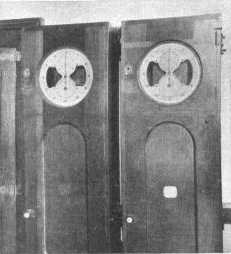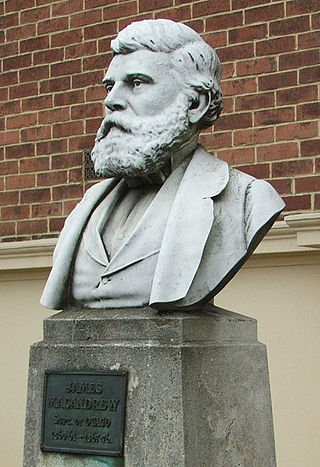Related Research Articles

A time signal is a visible, audible, mechanical, or electronic signal used as a reference to determine the time of day.

Otago Harbour is the natural harbour of Dunedin, New Zealand, consisting of a long, much-indented stretch of generally navigable water separating the Otago Peninsula from the mainland. They join at its southwest end, 21 km (13 mi) from the harbour mouth. It is home to Dunedin's two port facilities, Port Chalmers and at Dunedin's wharf. The harbour has been of significant economic importance for approximately 700 years, as a sheltered harbour and fishery, then deep water port.

Dunedin is the second-largest city in the South Island of New Zealand, and the principal city of the Otago region. Its name comes from Dùn Èideann, the Scottish Gaelic name for Edinburgh, the capital of Scotland. The city has a rich Scottish, Chinese and Māori heritage.

Lyttelton is a port town on the north shore of Lyttelton Harbour / Whakaraupō, at the northwestern end of Banks Peninsula and close to Christchurch, on the eastern coast of the South Island of New Zealand.

A time ball or timeball is a time-signalling device. It consists of a large, painted wooden or metal ball that is dropped at a predetermined time, principally to enable navigators aboard ships offshore to verify the setting of their marine chronometers. Accurate timekeeping is essential to the determination of longitude at sea.

James Macandrew was a New Zealand ship-owner and politician. He served as a Member of Parliament from 1853 to 1887 and as the last Superintendent of Otago Province.

Port Chalmers is a town serving as the main port of the city of Dunedin, New Zealand. Port Chalmers lies ten kilometres inside Otago Harbour, some 15 kilometres northeast of Dunedin's city centre.

Hong Kong Time is the time in Hong Kong, observed at UTC+08:00 all year round. The Hong Kong Observatory is the official timekeeper of the Hong Kong Time. It is indicated as Asia/Hong_Kong in the IANA time zone database.

The Port Chalmers Branch was the first railway line built in Otago, New Zealand, and linked the region's major city of Dunedin with the port in Port Chalmers. The line is still operational today.

The villages and then city that lay at the head of Otago Harbor never existed in isolation, but have always been a staging ground between inland Otago and the wider world. While Dunedin's current official city limits extend north to Waikouaiti, inland to Middlemarch and south to the Taieri River mouth, this articles focus is the history of the Dunedin urban area, only mentioning Mosgiel, the Otago Peninsula, Port Chalmers and inland Otago for context.

The Shepherd Gate Clock is mounted on the wall outside the gate of the Royal Observatory, Greenwich building in Greenwich, Greater London. The clock, an early example of an electrically connected clock system, was a sympathetic clock mechanism controlled by electric pulses transmitted by a motor clock inside the main building. The network of 'sympathetic clocks' was constructed and installed by Charles Shepherd in 1852. The clock by the gate was probably the first to display Greenwich Mean Time to the public, and is unusual in using the 24-hour analog dial. Also it originally showed astronomical time which started at 12 noon not midnight.

Holy Trinity Church is an Anglican church in Port Chalmers, New Zealand. The church building is constructed in volcanic stone and has some fine stained glass, and is listed as a Category I Historic Place. Together with St Barnabas Church, Warrington, Holy Trinity Church is part of the Port Chalmers-Warrington Parish of the Anglican Diocese of Dunedin, New Zealand.

Public transport in Dunedin, New Zealand is mainly by bus. The Otago Regional Council designs routes and schedules and contracts operation of bus services to two bus companies, Go Bus Transport and Ritchies Transport. Services operate daily at mainly 15 to 30-minute headways; services on evenings, weekends and holidays at about half the weekday frequency and there are no services on late Sunday or holiday evenings, nor on Christmas Day, Good Friday or Easter Sunday.

James Walker Bain was a 19th-century New Zealand politician. He was a significant businessman in Invercargill and Southland.

Ravensbourne is a suburb of the New Zealand city of Dunedin. It is located on Otago Harbour on the steep southeastern slopes of Signal Hill. It lies on the harbour's northern shore, 4.5 kilometres (2.8 mi) east-northeast of the city centre.
Chalmers, originally Port Chalmers, was a parliamentary electorate in the Otago Region of New Zealand, from 1866 to 1938 with a break from 1896 to 1902. It was named after the town of Port Chalmers, the main port of Dunedin and Otago.
State Highway 88 (SH 88) is a New Zealand State Highway connecting the city centre of Dunedin with Port Chalmers, which is the location of Dunedin's main port facilities and home of one of New Zealand's major container terminals. It is roughly 12 km long.
Philip Laing is a 19th-century sailing ship best known as the second immigrant ship to arrive in Dunedin, New Zealand, on 15 April 1848. Chartered by the New Zealand Company for this voyage the ship was carrying Scottish settlers, under the charge of the Rev. Dr. Thomas Burns.
Matoaka was a 1092-ton wooden New Brunswick full-rigged ship built in 1853 for Willis, Gunn, & Co. She was sold to Shaw, Savill, & Albion by 1859. Between 1859 and 1869 she made eight voyages to New Zealand. Her fastest run from Bristol to Lyttelton, New Zealand was 82 days in 1862. On 13 May 1869 she left Lyttelton for London under Captain Alfred Stevens with 45 passengers and 32 crew but was never seen again. In 1865 she was classed as 1322 tons.

Observation Point, also known as Flagstaff Lookout or Flagstaff Hill, and formerly as Flagstaff Point is a large bluff in central Port Chalmers, in New Zealand's South Island. The point, as its name suggests, offers panoramic views covering the town, its deep-water port, and across the Otago Harbour. A road, Aurora Terrace, ascends to near the top of the point, allowing for easy public access.
References
- ↑ "Harbor Department. No. III", Otago Daily Times, 9 April 1864, retrieved 30 January 2021
- ↑ "Shipping", Otago Daily Times, 30 March 1867, retrieved 30 January 2021
- 1 2 3 4 5 "Flagstaff". Register of Historic Places. Heritage New Zealand.
- 1 2 3 4 Kinns, Roger (2017). "The Principal Time Balls of New Zealand". Journal of Astronomical History and Heritage. 20 (1): 81–84.
- ↑ "Shipping", Otago Daily Times, 19 June 1872, retrieved 30 January 2021
- 1 2 "Harbor Board", Evening Star, 28 January 1881, retrieved 30 January 2021
- 1 2 3 4 MacLean, Hamish (21 August 2020). "Historic timeball refitted above port". Otago Daily Times. Retrieved 30 January 2021.
- ↑ Lewis, John (5 October 2020), "Time ball testing tenterhooks take hold", Otago Daily Times, retrieved 30 January 2021
- ↑ Morris, Chris (27 November 2019), "$60,000 to reinstate historic Port Chalmers timeball", Otago Daily Times, retrieved 30 January 2021
Coordinates: 45°48′55″S170°37′35″E / 45.81528°S 170.62639°E